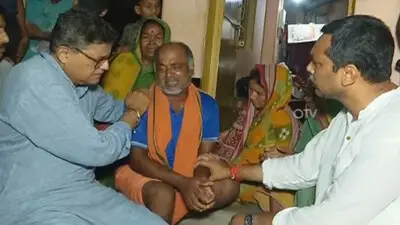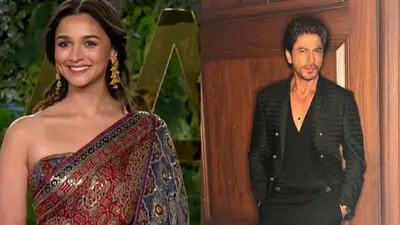Recommended Stories
The order will have a direct implication on prestigious educational institutions like IITs which can go ahead with admissions ignoring the sub-quota provision under which 325 candidates from minorities were shortlisted for counselling. "We are not inclined to grant stay," a bench comprising justices K S Radhakrishnan and J S Khehar said while questioning the calculation for carving out the sub-quota within the 27 percent OBC quota.
"You are carving out 4.5 per cent sub-quota. Will it not affect other OBCs?" the bench asked referring to the data provided by the government about the ongoing counselling for IITs. It said the effect would "not be marginal". Before issuing notices to the petitioners on whose PIL the high court had quashed the sub-quota for minorities, the bench was of the view that the scheme of 4.5 per cent reservation was neither supported by Constitutional provisions nor by statutory provisions.
The bench, before which the Ministry of Human Resource Development placed documents forming the basis for its decision on sub-quota, asked "can you make classification on the basis of religion". The court further said unlike 27 per cent reservation for OBCs in Central Educational Institutions which was supported by Constitutional provisions, the December 22, 2011 Office Memorandum (OM) on the sub-quota issue did not have legislative support.
The bench, which also questioned the calculation of providing sub-quota wanted to know from the government as to "whether there was any Constitutional and statutory support for granting 4.5 percent sub-quota. It said "the second question is whether the office memorandum has constitutional and statutory support or not". Additional Solicitor General Gourab Banerji asked the apex court to consider his plea for staying the high court order in view of the ongoing counselling for IITs for which 325 candidates have been short listed under the sub-quota.
However, the bench said it was not inclined to stay the high court order as carving out sub-quota from minorities would have a bearing on the OBCs. The court once again questioned the government for not consulting statutory bodies like the National Commission of Minorities (NCM) and National Commission for Backward Classes (NCBC) in determining the sub-quota.
"Why you overlooked the NCBC and NCM. They are two most important statutory bodies," the bench asked. At the outset, the bench told the Centre that voluminous documents, which have been placed before it now, should have been produced in the high court. When Banerji said the high court was under the impression that the sub-quota was for all minorities, the bench shot back "it was because that was the reflection in the office memorandum".
Banerji said, all religious minorities like Buddhists and Zoroastrians are not in the list of 4.5 percent sub-quota. He said though the OBCs among the religious minorities are covered under 27 percent OBC quota, 4.5 percent sub-quota is granted to lowest ranks of Muslims or converts to Christianity. Banerji said the first cut-off identifying the OBC within the minorities for sub-quota were that they have to be socially and educationally backward and they have to be religious minorities.
At this, the bench said "that is the difficulty and that is the point. We can understand if it is across the board. How you made the calculation?" The ASG laboured hard to satisfy the bench that the Centre considered the OM of 1990 which formed the basis for implementing the Mandal Commission recommendation, 1993 list of NCBC and Sachar Committee report before determining the 4.5 per cent sub-quota for minorities.
While the bench was asking him whether the sub-quota was supported by Constitutional and legislative provisions, Banerji said it could be done through executive order by issuing OM as in the Mandal case. He said some states like Tamil Nadu and Kerala have carved out sub-quota for Muslims within the OBC quota. The Centre had placed before the Supreme Court documents on the basis of which it carved out 4.5 per cent sub-quota onTuesday.
The apex court while refusing to stay the high court order had on June 11 asked the Ministry of Human Resources Development to place the material before it. The bench had ticked off the government for the way it had handled the "complex" and "sensitive" issue. The apex court had also expressed its "unhappiness" that the Centre was blaming the High Court when it had itself failed to produce documents to support its case. Banerji said, all religious minorities like Buddhists and Zoroastrians are not in the list of 4.5 percent sub-quota.
He said though the OBCs among the religious minorities are covered under 27 percent OBC quota, 4.5 percent sub-quota is granted to lowest ranks of Muslims or converts to Christianity. Banerji said the first cut-off identifying the OBC within the minorities for sub-quota were that they have to be socially and educationally backward and they have to be religious minorities. At this, the bench said "that is the difficulty and that is the point. We can understand if it is across the board. How you made the calculation?"
The ASG laboured hard to satisfy the bench that the Centre considered the OM of 1990 which formed the basis for implementing the Mandal Commission recommendation, 1993 list of NCBC and Sachar Committee report before determining the 4.5 per cent sub-quota for minorities. While the bench was asking him whether the sub-quota was supported by Constitutional and legislative provisions, Banerji said it could be done through executive order by issuing OM as in the Mandal case.












